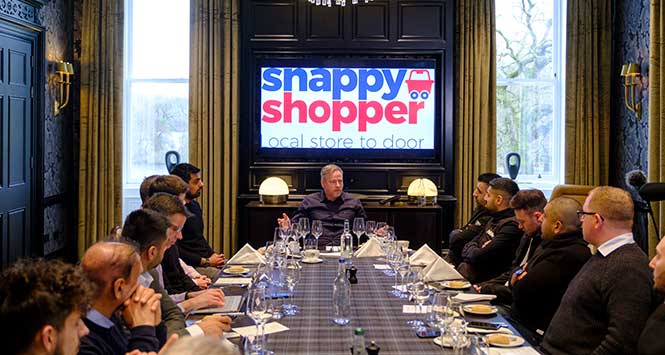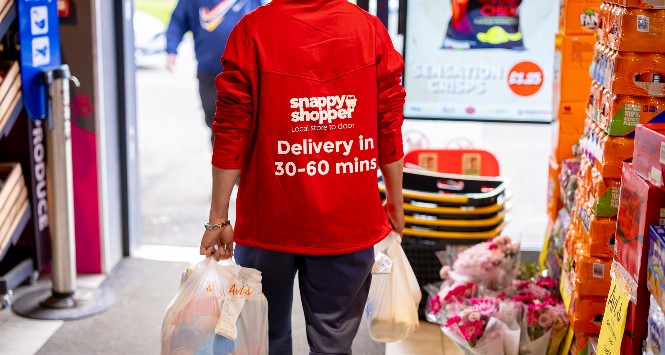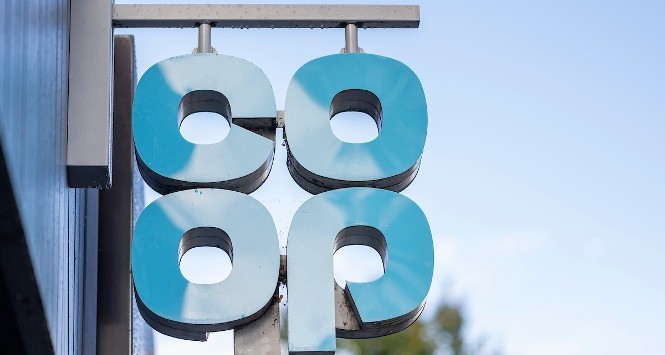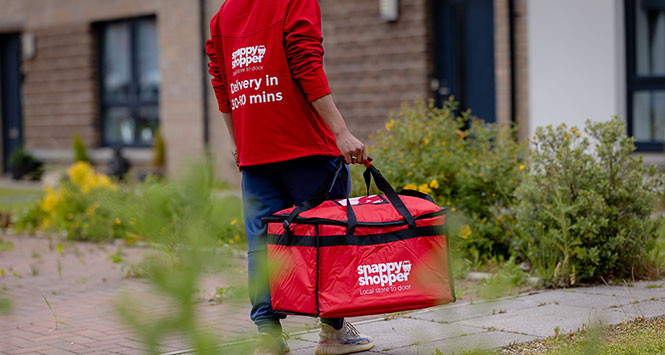With home delivery the biggest opportunity to hit convenience retailing in decades, SLR invited a panel of top retailers and other industry insiders to Cameron House Hotel on the banks of Loch Lomond to discuss the massive opportunity it presents to the channel.
by Findlay Stein
There have been many consequences of the Covid-19 pandemic, some good and some not so good. Probably the biggest opportunity, however, has been the massive upsurge in the popularity of home delivery. And it’s probably fair to say that home delivery presents perhaps the biggest opportunity in living memory for local retailers to turbocharge their businesses and very quickly grow sales and profits.
With that in mind, SLR hooked up with Dundee-based home delivery specialists Snappy Shopper las month to invite a select group of top local retailers and other industry insiders to a working lunch to discuss the ins and outs of home delivery.
Not every retailer attending the session offers the service and in his introductory remarks SLR Publishing Director Antony Begley pointed out that while providing a home delivery service unquestionably involves hard work, it can have a transformational effect on businesses for remarkably little risk or financial outlay. He cited award-winning Londis retailer Natalie Lightfoot, who frequently says home delivery is the best thing she’s ever done in her store in Baillieston on the outskirts of Glasgow.
It’s certainly the case that basket spends tend to be much bigger – typically north of £26 – and with no indication that demand for the service is slowing post-Covid, it’s important to get in there before your competition. Begley said this would be a “big win,” since customers are very reluctant to change suppliers once they have a solution they are happy with. Getting in before the competition, then, is half the battle.
- Irfan Bashir, Premier Group NJ
- Antony Begley, SLR
- Jim Carroll, One Stop
- David Fair, Snappy Shopper
- Barry Hanif, Nisa
- Matthew Howie, Nisa Retail
- Jay Javid, Premier Group NJ
- Saj Javid, Premier Group NJ
- Phil Knox, Best One
- Dael Links, Snappy Shopper
- Stephen McIndoe, Premier Group NJ
- Daniall Nadeem, Nisa Bellshill
- Saleem Sadiq, Spar Renfrew
- Waseem Sadiq, Spar Renfrew
- Faisal Sattar, MHouse Solutions
- David Thomson, Snappy Shopper
Catching the wave
Snappy Shopper is the major player in home delivery in Scotland and the business has grown in tandem with the explosion of the market, as David Thomson, the company’s UK Independent Sales Controller explained. Industry veteran Thomson joined Snappy in January 2020, just two months before the start of the first national lockdown. At that point he was employee number nine. The company now employs more than 170 people.
Thomson highlighted that home delivery “isn’t for everyone”. “It’s a jump, a step out of the norm, but it doesn’t need to be a big hassle,” he said. A small investment at the outset makes “all the difference”.
Conversely, home delivery “is not rocket science,” said Thomson. Get the basics right and do it well and you will be well on the way to growing your business, he said, referring in particular to one Dundee retailer who is bringing in an additional £1.5m annually for following two golden rules: deliver what’s ordered, and deliver it when you say. “Do that and you’ll keep your customers”, he explained.
For Jim Carroll, Franchise Business Development Manager Scotland for One Stop, the three key factors are availability, accuracy of picking and price. In that order.
He said Snappy dovetails into the symbol group’s franchise stores really well. The beauty of home delivery for Carroll is its simplicity. It’s “just a product and a price”, he said. Snappy Shopper users, he explained, don’t see any possible negative aspects of stores like poor service, cold shopfloors, faulty equipment or bad lighting.
Another veteran of the industry, Carroll likened the impact of home delivery to the impact longer opening hours had back in the 1980s. “Convenience didn’t exist at that point with stores closed on Saturday afternoons and Sundays,” he explained. “Eight till late created the biggest opportunity independent retailers had ever seen – and they grasped it. Home delivery is today’s equivalent of that game-changing shift.”
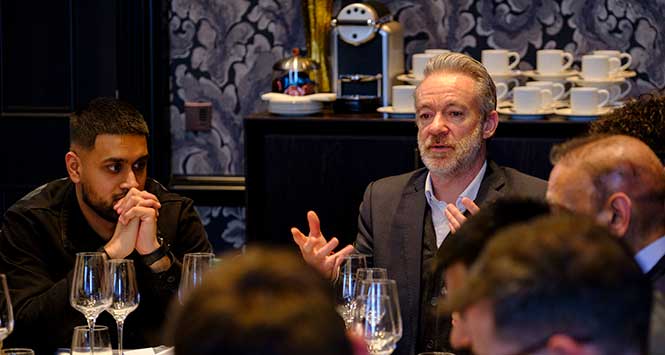
Why isn’t everyone doing it?
So then, if home delivery offers big rewards and is bang on the zeitgeist, why isn’t everyone doing it?
For Jay Javid, Director of PGNJ which operates a chain of stores in and around Glasgow, it’s because of concerns he has as a multi-site operator over setting up and managing price files centrally for nine stores. His mind was quickly put at ease by retailer Saleem Sadiq who has five Spar stores and offers home delivery through Snappy: “There’s no need for a central operation,” is how Saleem put it. Saleem and his family’s stores all work independently of each other and it works just fine, thank you very much.
Rather than diving right in with nine stores, however, Thomson advised multi-site operators to err on the side of caution and start with stores they know are going to do well. Learn as you go with the stores that are likely to be successful quickly, then use those learnings to roll the offer out to other stores.
Unsurprisingly, the lack of easy (or any) integration between EPoS systems and home delivery platforms was also an issue for some of our retailers. In an ideal world, delivery apps would update in tandem with in-store prices via a simple API with the EPoS system – but this is rarely if ever the case. EPoS houses are notoriously reluctant to integrate with third party software. “Whichever EPoS provider hits that nail on the head will end up smiling,” said Jay Javid, adding that it was hard enough do run promotions in-store without having to manually upload them to an app.
Saleem highlighted that he did have to manually update the Snappy Shopper app, but it wasn’t “a major headache”.
Daniall Nadeem’s Nisa Bellshill store handles upwards of 50 deliveries per day through Snappy and Daniall admitted: “It’s time. It’s effort. But it’s worth it.” He spends two to three hours matching the Snappy menu to his product file but the results make it worth his while.
Thomson said Snappy was very much aware of the integration problem and are making significant progress on that front – although the problems invariably occur with the intransigence of the EPoS providers and that’s proven a very tough nut to crack right across the UK.
Begley suggested integration was 90% of the problem and asked attendees to imagine a world where the EPoS fully integrated with the home delivery app and the store also had digital shelf edge labels (SELs): “The three or four-weekly nightmare of changing promotion cycles would be gone. No more replacing hundreds of price tickets in-store, no more replacing boxes and boxes of POS, no more uploading promotions into the Snappy app. Hit the button and literally everything updates instantly.”
For Jay Javid, “integration is the only thing” stopping him.
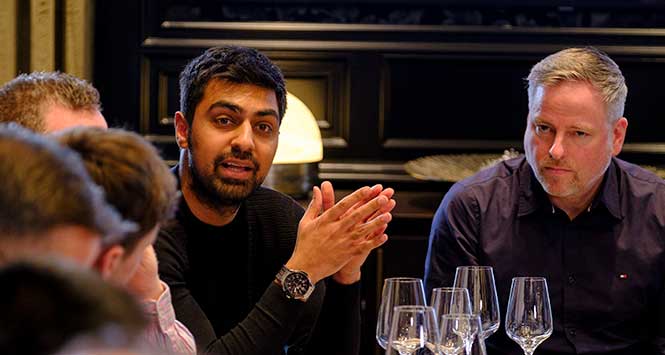
Driver dilemma
Saleem biggest problem is not integration but getting hold of drivers. Saleem is “fighting with Uber” to get drivers and would prefer to piggyback off third-party drivers.
Snappy is “dabbling” with ‘last-mile’ delivery itself, which Thomson said could work in established areas.
He said it was very difficult for retailers to engage with last-mile suppliers because of their business model, citing the high commission taken by the likes of Uber Eats as proof of this – typically 30% or 35%.
Despite many concerns, however, getting home delivery up and running is actually very inexpensive with no long-term commitments. Give it a go and it’s working you’ll see the results in the till.
Thomson explained that, essentially, once a retailer hits the £2,000 a week mark from home delivery then they could start thinking about investing £400 to £500 of that in a driver and van. Even doing just £2,000 a week is enough to make a small financial contribution to the business. And, he added, “when retailers hit two grand, they’re on their way to five”.
Saleem also wondered aloud about using taxi companies. Thomson’s advice was to engage with a taxi driver and not a taxi firm, as it’s individual drivers and not companies who must perform due diligence around age-restricted purchases.
This issue of underage sales was a concern for retailer and EPoS supplier Faisal Sattar of MHouse Solutions. Thomson highlighted that sales of age-restricted products is a very important issue but said that retailers simply have to have the same processes in place for deliveries as they have in the store itself. He also stressed the importance of training drivers around Challenge 25.
Thomson warned that he also expects local authorities to start test purchasing at some point, something Snappy already does internally.
Drivers must hit a “customer looks over 25” button before they can complete a delivery of age-restricted products made through Snappy Shopper. Furthermore, the Snappy retailer dashboard also has a digital refusal log.
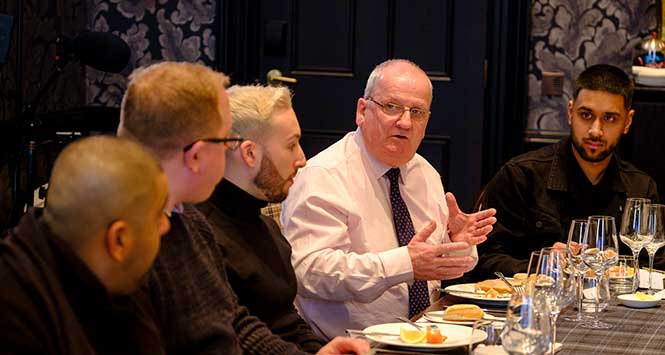
Rival fears
Retailers also expressed concerns about rival stores signing up for Snappy Shopper. Snappy looks at a model of one store per 10,000 people, which is enough for that store to build a “great business,” Thomson said, adding that social media was “absolutely key” to success. He quoted the case of two Dundee stores roughly three miles apart which are both doing well because they’re both very vocal about offering home delivery.
Thomson explained that experience shows that when two good retailers operate home delivery in some sort of proximity to one another, the result is a net gain for both stores.
If anything, Thomson said, it was harder to start up in isolation, where there weren’t any other Snappy Shopper stores around.
Jay commented that “everyone wants to be exclusive” and compared home delivery to the Lottery and PayPoint, which have mushroomed to a point where “everyone’s got them”. But exclusivity is no guarantee of success. Doing the job well is likely to deliver growth under most circumstances.
Swap shop
Concerns around range and substitutions were another worry for Jay. Thomson’s advice was to keep ranges as tight as possible on the app, especially at the outset, to help avoid having to substitute. “And if you must substitute,” he advised, “then get the customer’s consent first, and don’t charge more”.
Begley backed this up. “Several retailers have told me that customers will put up with anything if they know in advance,” he said. “Phone them. It’s the same if the delivery’s going to be late. Ninety-nine per cent of the time they won’t have a problem if you give them a call and say you’re going to be 10 minutes late.”
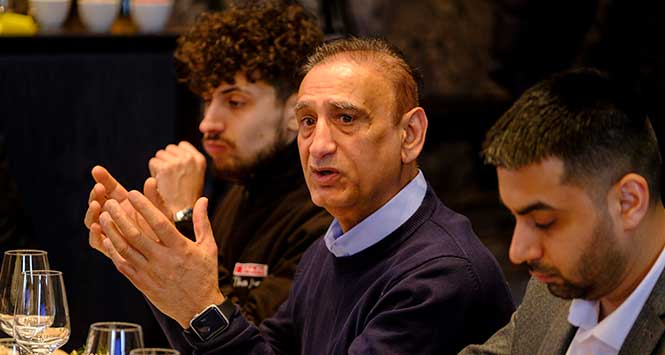
Get vocal on social
The importance of social media was a recurring theme throughout the session. Thomson put it bluntly: “If you want to get to five figures, you’ll need Facebook. We talk endlessly to retailers who don’t have a good Facebook page about the importance of having one.”
He said stores with a significant amount of ‘likes’ on their Facebook page – over 1,000 for example – were those with the highest home delivery sales, and that you must take customers with you on your journey.
“If it’s as simple as giving someone a lollipop for liking your Facebook page then that’s the sort of stuff you need to do at the start of your journey,” he advised.
Nisa Business Development Manager Matthew Howie made a good point that TikTok and Instagram were probably growing quicker than Facebook, citing Nisa retailer Daniall Nadeem who generates a lot of hype around pre-sales on these apps which are more popular among many younger shoppers. Daniall puts products on Snappy with a ‘coming soon’ logo and when they become active “it just blows up”.
Daniall said his TikTok content, which focuses on in-store displays, new products and, of course, dancing, was “just a bit of fun”. Fun maybe, but it does engage with a totally different audience from Facebook. This struck a chord with Saleem’s son Waseem, who labelled Facebook “a dying platform”.
Dying it may possibly be but it remains by some clear distance the most important platform for home delivery retailers for the time being.
Dael Links of Snappy suggested setting up a Facebook community group as a great way to target customers wth an active interest in your business, rather than just everyone on Facebook. Multi-site retailer Barry Hanif added that the social meda wasn’t necessarily about promotions but “reminding customers the shop is there”. Begley agreed. “Social media should be about establishing and building relationships, not just selling stuff,” he said. There was broad agreement that the vast majority of posts should be about community engagement in some sense.
Faisal Sattar advised retailers unsure about social media to get younger staff to help: “Just give them a work phone to make content for you and you’ll soon see much bigger engagement.”
Promotion puzzle
Opinion was split over offering promotions on the app for home delivery. At this point, it’s simply not practical to offer every single in-store promotion on the app too – and many retailers around the table suggested that it’s not even a good idea to offer promotions at all.
Saleem Sadiq, for instance, made the valid point that promotions tend to drive impulse sales, not planned purchases. And most customers don’t open the Snappy app looking for deals; they open it to buy something they want or need and pricing is of secondary importance.
David Thomson suggested that in his experience the top performing home delivery retailers make great use of promotions on the Snappy app. “Customers like promotions,” he said, and they also can be used tactically to help manage fresh and other short-coded stock.
Time and effort are also major considerations. Daniall Nadeem used to upload Nisa’s full promotional leaflet to the Snappy app but stopped due to the time it took. Without an API to automatically upload the promotions, he has to manually upload each promotion individually. He now focuses instead on ‘Wow!’ deals and freezer promotions. He schedules posts to run every couple of hours and says that these scheduled posts on Facebook, TikTok and Instragram see “two or three sales come in on Snappy that I wouldn’t pick up in-store”.
Begley suggested that getting the first order from a customer is the hardest one. Data shows that three-quarters of the time, customers will order again after making that first purchase. He suggested a strong initial incentive would soon pay for itself in repeat business, citing one retailer who actually offers a £40 bottle of champagne to new customers, getting the £40 back inside a couple of orders.
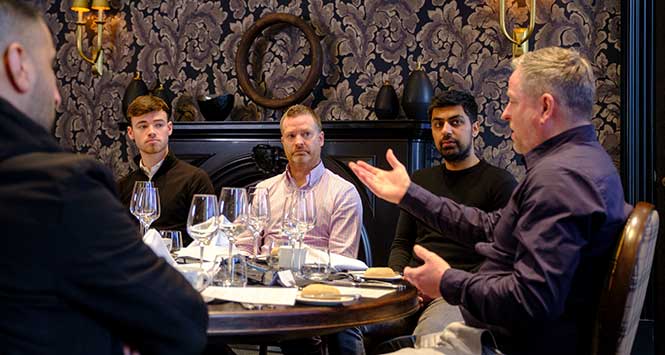
Big baskets
Of course, the great attraction of home delivery is the bigger baskets. It doesn’t take too many £200 spends, which is not unusual, to claw back the cost of that bottle of bubbly.
There are several reasons for this. Antony Begley discussed the psychology of spending money, quoting research which found that handing over cash in stores has been shown to trigger the same reaction in the brain as occurs when physical pain is felt. In other words, spending cash hurts. The same research found that spending on credit cards or apps, conversely, didn’t trigger those some responses in the brain. By extension, using a smartphone for a home delivery order is further divorced from the reality of parting with your hard-earned.
There are of course many fairly obvious reasons why home delivery order values tend to be higher. David Thomson suggested baskets were bigger because shoppers didn’t have the same distractions they faced in-store and could take time to check their cupboards to see what needed replenished.
Theorising aside, one very concrete reason is linked to delivery charges. While it might be tempting to offer free delivery to attract business, this can quickly become a problem, with customers ordering little and often. The consensus around the table was that sales in fact increase when a delivery charge is added. The number of deliveries will fall but basket size will increase dramatically as shoppers seek to make the most of that £3 delivery fee.
The impact that pressures from higher fuel costs and rising wages might have on delivery charges in future was also discussed.
With rising costs across the board, it will surprise no one if retailers feel the need to increase delivery charges in future.
Snappy’s £3 delivery fee is only ‘advisory’ and Thomson stressed that it’s entirely up to retailers, although he did warn retailers to tread carefully around deliver fees, particularly where retailers are considering charging more than a rival store.
And so, as the session ended, talk of the soaring costs of doing business turned to the emergence of dark store operators like Getir and Gorillaz, which Thomson sees as a threat to not only the delivery market but also the traditional convenience model.
Dark operators are thankfully thin on the ground in Scotland but they are huge in major cities down south, so it’s probably only a matter of time before they start targeting Scotland, particularly major cities like Glasgow, Edinburgh, Dundee and Aberdeen. The best form of defence against this? Attack.
And the conversation came full circle, reinforcing the idea once more that getting started now is the best way of protecting your business from dark stores in the future.
With that in mind then, should any local retailer asking themselves, “Can I afford to offer home delivery?” instead be asking: “Can I afford not to?”
- Get in before the competition
- A small initial investment pays dividends
- It’s better to charge for delivery
- Deliver what’s ordered, when you say you’ll deliver it
- Call your customers if there’s a problem
- Be prepared to invest in a driver and van
- Challenge 25 training for drivers is crucial
- A strong social media presence is vital
- Don’t go overboard with promotions


